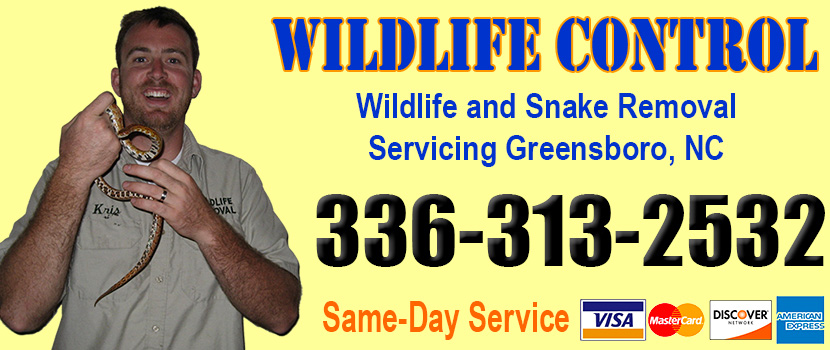
Welcome to greensborosnakes.com! I am David, a snake enthusiast living in Greensboro, NC. Many people don't know that Greensboro is in fact full of snakes! You just need to know where to find them - they can often be shy and elusive. Some North Carolina snake species are more common outside of the city limits, in different parts of Guilford County NC, but many types of snakes are indeed common in the more urban parts of Greensboro. This guide is meant to help educate you about the beautiful snakes of Greensboro, and to help you identify the most common snakes of Greensboro, as well as the venomous snakes of Greensboro that you should learn to recognize and avoid. If you want more detail, click here for my complete list of ALL snake species in Greensboro. Remember the following:
- Most snakes of Greensboro are harmless and don't want to encounter you
- Venomous snakes exist but are uncommon in Greensboro, North Carolina
- Snakes eat rats and mice and are a valuable part of the North Carolina ecosystem
- Never kill a snake - if you leave a snake alone, it will leave you alone.
Common Snake Species in Greensboro
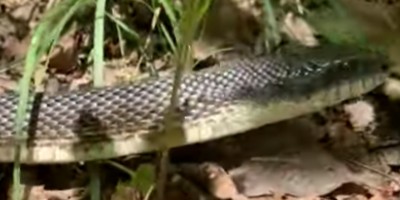 Rat Snakes:
The eastern rat snake, also called the black rat snake, is one of the most commonly encountered reptiles around the Greensboro area. These snakes, with a shiny black body, have very thick, round bodies that are commonly about five feet in length. The eastern rat snake is non-venomous and does not pose serious threats to residents of North Carolina. Being a constrictor snake, the black rat snake can kill many different types of prey. The most common creatures that make their way into this snake’s diet are rats, mice, a variety of birds, and even various amphibians. They often are found hunting around sheltered areas and old foundations in search of rodents and other small critters.
Rat Snakes:
The eastern rat snake, also called the black rat snake, is one of the most commonly encountered reptiles around the Greensboro area. These snakes, with a shiny black body, have very thick, round bodies that are commonly about five feet in length. The eastern rat snake is non-venomous and does not pose serious threats to residents of North Carolina. Being a constrictor snake, the black rat snake can kill many different types of prey. The most common creatures that make their way into this snake’s diet are rats, mice, a variety of birds, and even various amphibians. They often are found hunting around sheltered areas and old foundations in search of rodents and other small critters.
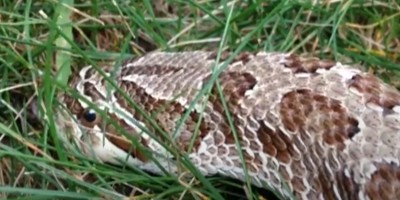 Hognose Snakes:
The eastern hognose snake is a non-venomous snake that can reach up to 50 inches in length. They receive their name from their characteristic “hog nose”, which is upturned and easily noticeable. From spotty orange to solid black, the hognose snake comes in a variety of colors and designs. One of the most unique habits of the hognose is if it is threatened, it will puff up its neck and head and pretend to lunge at you. Their nose serves a purpose, and that purpose is to root through the soil to find their food. They eat all kinds of critters, such as amphibians, rodents, birds, and particularly toads. These harmless creatures prefer to live in sandy soil areas all around North Carolina.
Hognose Snakes:
The eastern hognose snake is a non-venomous snake that can reach up to 50 inches in length. They receive their name from their characteristic “hog nose”, which is upturned and easily noticeable. From spotty orange to solid black, the hognose snake comes in a variety of colors and designs. One of the most unique habits of the hognose is if it is threatened, it will puff up its neck and head and pretend to lunge at you. Their nose serves a purpose, and that purpose is to root through the soil to find their food. They eat all kinds of critters, such as amphibians, rodents, birds, and particularly toads. These harmless creatures prefer to live in sandy soil areas all around North Carolina.
Venomous Snake Species in Greensboro
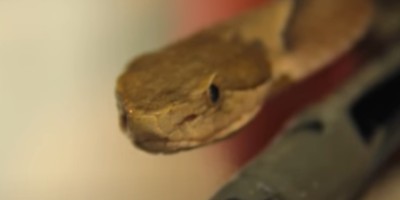 Copperheads:
The copperhead snake is one of the most commonly seen snakes around North Carolina. This often scares plenty of people, as the copperhead is venomous. With that being said, copperhead’s venom is fairly mild and rarely causes death to humans. The copperhead is easily identified, as it has a copper-colored head that is easily picked out. This snake belongs to the pit viper family, which utilizes heat-sensing features to pick out heat sources and strike them for both food and defense. Copperheads are generally anywhere between two to three feet long for mature snakes. You can also pick out a copperhead by looking for its unique hourglass-shaped dark copper-colored patches on its body.
Copperheads:
The copperhead snake is one of the most commonly seen snakes around North Carolina. This often scares plenty of people, as the copperhead is venomous. With that being said, copperhead’s venom is fairly mild and rarely causes death to humans. The copperhead is easily identified, as it has a copper-colored head that is easily picked out. This snake belongs to the pit viper family, which utilizes heat-sensing features to pick out heat sources and strike them for both food and defense. Copperheads are generally anywhere between two to three feet long for mature snakes. You can also pick out a copperhead by looking for its unique hourglass-shaped dark copper-colored patches on its body.
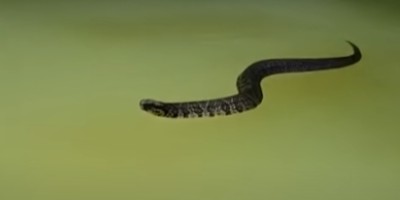 Cottonmouth:
Similarly referred to as the water moccasin, the cottonmouth is a venomous snake that inhabits North Carolina. Often found in wetland-type habitats, the cottonmouth gets its name from the characteristic white inside of its mouth, which is only exposed if it is biting something. Cottonmouths have an appearance dominated by dark bands running down its body with a green or olive-colored background. When they become older snakes, they are almost completely dark-colored. As a member of the pit viper family, they also possess a heat-sensing pit that allows them to determine where to strike when they bite. Mostly nocturnal, the cottonmouth is a snake that is better left alone if encountered.
Cottonmouth:
Similarly referred to as the water moccasin, the cottonmouth is a venomous snake that inhabits North Carolina. Often found in wetland-type habitats, the cottonmouth gets its name from the characteristic white inside of its mouth, which is only exposed if it is biting something. Cottonmouths have an appearance dominated by dark bands running down its body with a green or olive-colored background. When they become older snakes, they are almost completely dark-colored. As a member of the pit viper family, they also possess a heat-sensing pit that allows them to determine where to strike when they bite. Mostly nocturnal, the cottonmouth is a snake that is better left alone if encountered.
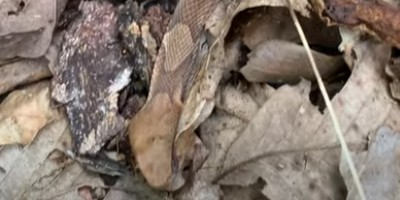 Rattlesnakes:
While they are rare around Greensboro, North Carolina possesses three different types of rattlesnakes throughout the state. Because creatures have a tendency to move about, it is still important for Greensboro residents to be aware of them. The first of these rattlesnakes is the eastern diamondback rattler. This snake has a distinctive diamond-shaped pattern of markings with pale edges running down its back, with a dark body background, as well as a triangle head shape. The diamondback is the largest of the three, as it can be up to six feet in length. The second rattlesnake is the timber rattler. The timber rattler is quickly identified by its dark bands with a light-colored background, and they also have a tan or brown line running down their back. These snakes can be around five feet in length. The final North Carolina rattlesnake is the pigmy rattlesnake, which derives its name from a length of one and a half feet. These snakes have a gray background with dark spots around their bodies. Each of these snakes is venomous, so it is important to exercise great caution around any of them.
Rattlesnakes:
While they are rare around Greensboro, North Carolina possesses three different types of rattlesnakes throughout the state. Because creatures have a tendency to move about, it is still important for Greensboro residents to be aware of them. The first of these rattlesnakes is the eastern diamondback rattler. This snake has a distinctive diamond-shaped pattern of markings with pale edges running down its back, with a dark body background, as well as a triangle head shape. The diamondback is the largest of the three, as it can be up to six feet in length. The second rattlesnake is the timber rattler. The timber rattler is quickly identified by its dark bands with a light-colored background, and they also have a tan or brown line running down their back. These snakes can be around five feet in length. The final North Carolina rattlesnake is the pigmy rattlesnake, which derives its name from a length of one and a half feet. These snakes have a gray background with dark spots around their bodies. Each of these snakes is venomous, so it is important to exercise great caution around any of them.If you're unsure, you can email me a photo of the snake at info@greensborosnakes.com and I will email you back with the snake's species. If you found a snake skin, read my Found a Skin? page, and you can email me a photo of the skin, and I'll identify the snake for you. If you need professional Greensboro snake removal help, click my Get Help page, or see the below website sponsor I found, who provides that service.
Remember, the term is not poisonous snakes of Greensboro, it's venomous snakes of Greensboro. Poison is generally something you eat, and venom is injected into you. That said, dangerous snakes are very rare in Greensboro. The few venomous snakes of Guilford County are rarely seen. But they are commonly misidentified, so learn about all the snake species of Greensboro in order to correctly identify them. These snakes are usually also found in the surrounding towns of Summerfield, Jamestown, Whitsett, Oak Ridge, McLeansville, Pleasant Garden, Stokesdale, Sedalia, and the surrounding areas.
Read our article about:
Signs of Snakes in the Attic and How to Remove Them
greensborosnakes.com domain and hosting costs made possible by the generous support of this sponsor:
